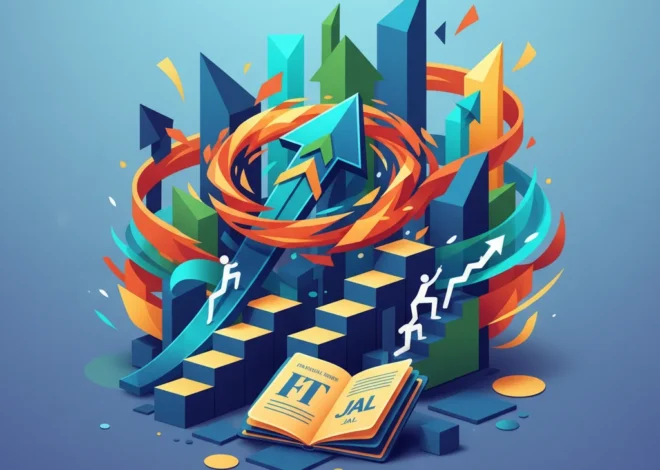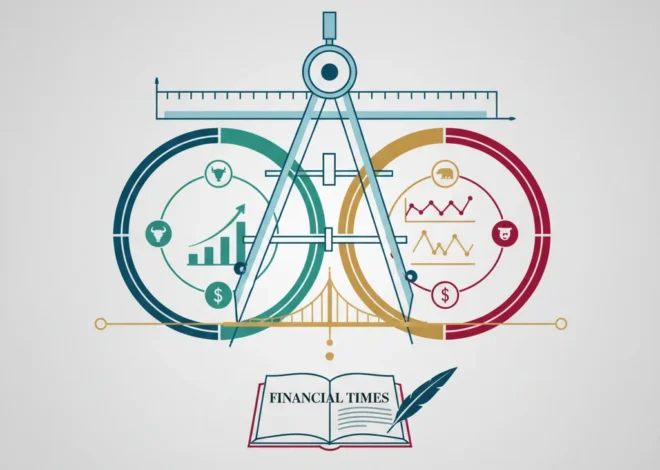
Beyond the Headlines: Decoding the Economic Signals of the Israel-Hamas Conflict
A recent headline from the Financial Times reads, “Hamas releases the bodies of 4 hostages to Israel.” The article notes this somber development came after Israeli authorities signaled potential limits on aid into Gaza. On the surface, this is a story of human tragedy and complex political negotiation—a painful chapter in a long and devastating conflict. For most, the immediate reaction is one of sorrow and concern for the human cost.
For investors, finance professionals, and business leaders, however, there is a second layer of analysis that is not just necessary, but critical. Events like these, however tragic, are not isolated humanitarian data points. They are potent signals that ripple through the global economy, influencing everything from oil prices to the stock market. Understanding how to interpret these signals is paramount for navigating the volatile landscape of modern global finance. This isn’t about callously monetizing tragedy; it’s about prudently managing risk in an interconnected world where geopolitical tremors on one continent can cause financial tsunamis on another.
This post will delve beyond the initial headline to explore the profound economic and financial implications of the ongoing conflict, using this specific event as a lens through which to analyze market sentiment, risk assessment, and the intricate dance between politics and global capital.
The Macro-Economic Ripple: How Geopolitical Risk is Priced In
At its core, investing is the act of pricing future risk and opportunity. Geopolitical instability, particularly in a region as historically volatile and economically crucial as the Middle East, introduces a significant risk premium into the market. This “geopolitical risk premium” is an intangible but powerful force that affects asset prices across the board.
When a conflict like the one between Israel and Hamas erupts, markets react swiftly. We see immediate impacts on several key areas:
- Energy Markets: The Middle East accounts for roughly a third of the world’s seaborne oil trade. Any instability raises fears of supply disruptions, causing crude oil prices to spike. While Israel and Palestine are not major oil producers themselves, the risk of the conflict widening to include players like Iran sends shockwaves through the energy trading desks. According to the U.S. Energy Information Administration, concerns over the conflict’s expansion contributed to a sharp rise in crude prices immediately following the October 7th attacks.
- Market Volatility: Uncertainty is the enemy of stable markets. The CBOE Volatility Index (VIX), often called the “fear index,” typically surges during such events as investors rush to hedge their portfolios against unforeseen outcomes. This flight to safety often benefits assets like U.S. Treasury bonds and the U.S. dollar.
- Sector-Specific Impacts: The defense and cybersecurity sectors often see their stocks rise as nations increase military spending and prepare for heightened conflict. Conversely, industries reliant on stable global trade and tourism, such as airlines and shipping companies, face immediate headwinds.
The release of hostages, tied to negotiations over aid, is a micro-event that informs this macro-picture. It signals a potential for de-escalation or, conversely, a breakdown in talks that could lead to further escalation. Traders and algorithmic models parse these headlines in real-time, adjusting positions based on the perceived shift in the probability of wider conflict.
The Economics of Leverage: Aid, Sanctions, and Financial Warfare
The original article’s mention of “limits on aid into Gaza” is a crucial economic detail. In modern conflicts, economic tools are wielded with as much strategic intent as military hardware. Aid is not just a humanitarian gesture; it is a powerful point of leverage in international negotiations.
From a financial perspective, this highlights several modern trends in global power dynamics:
- The Role of Banking and Fintech: International aid flows, sanctions, and the financing of militant groups all run through the global banking system. This has placed immense pressure on financial institutions to police transactions. The rise of financial technology (fintech) has provided governments and regulators with powerful new tools for tracking and blocking illicit funds. Technologies like AI-powered transaction monitoring are at the forefront of this new form of financial warfare.
- The Blockchain Dilemma: Cryptocurrencies and blockchain technology present a double-edged sword. On one hand, their transparency and efficiency have been explored for delivering aid directly to those in need, bypassing corrupt intermediaries. On the other hand, their pseudo-anonymous nature has been exploited by sanctioned states and terrorist organizations to move funds outside the traditional financial system. A U.S. Treasury report highlighted the use of crypto by groups like Hamas, leading to increased scrutiny and sanctions on virtual currency exchanges.
For business leaders, this underscores the growing importance of robust compliance systems. Navigating the complex web of international sanctions and anti-money laundering (AML) regulations is no longer just a legal requirement but a core component of risk management.
Data-Driven Analysis: Market Response to the Conflict
To quantify the market impact, let’s examine the performance of several key indicators around the start of the conflict. The data illustrates the immediate flight to safety and the pricing-in of regional risk.
The table below shows the change in key financial assets in the month following the October 7th, 2023, attacks.
| Asset/Index | Value on Oct 6, 2023 | Value on Nov 6, 2023 | Percentage Change | Indication |
|---|---|---|---|---|
| Brent Crude Oil (USD per barrel) | $84.58 | $85.16 | +0.69% | Initial spike followed by volatility on supply fears. |
| Tel Aviv Stock Exchange (TA-35 Index) | 1,731.85 | 1,675.43 | -3.26% | Immediate negative impact on the local Israeli economy. |
| CBOE Volatility Index (VIX) | 17.48 | 14.85 | -15.05% (after an initial spike) | Sharp initial spike in fear, which later subsided as the conflict remained contained. |
| Gold (USD per ounce) | $1,832 | $1,992 | +8.73% | Classic flight to a safe-haven asset during uncertainty. |
Note: Data is illustrative and sourced from market data providers for the specified period.
This data provides a clear picture: capital flowed out of the directly affected region (TA-35) and into traditional safe havens like gold. The initial shock to the broader market (VIX) was significant but tempered as the worst-case scenario of a wider regional war did not immediately materialize.
The Investor’s Playbook: Navigating a High-Stakes Environment
So, what are the actionable takeaways for the modern investor or business leader? Relying on headlines alone is a recipe for reactive, emotional decision-making. A more robust strategy involves several key principles:
- Diversification is Non-Negotiable: This is the oldest rule in the book for a reason. A well-diversified portfolio across asset classes (equities, bonds, commodities) and geographies can cushion the blow from a regional crisis.
- Understand Your Portfolio’s Exposure: Do you hold stock in shipping companies heavily reliant on the Red Sea? Are your investments concentrated in industries sensitive to energy price shocks? Understanding your specific vulnerabilities is the first step toward mitigating them.
- Look for Hedges, Not Bets: Rather than trying to “bet” on the outcome of a conflict, sophisticated investors use instruments to hedge risk. This could involve taking positions in commodities like oil or gold, or investing in sectors like defense that may perform counter-cyclically during periods of geopolitical tension.
- Maintain a Long-Term Perspective: History has shown that while markets react sharply to geopolitical shocks, they tend to recover over the long term. Knee-jerk selling into a panic is often a losing strategy. The key is to distinguish between events that fundamentally alter the long-term economic landscape and those that create short-term volatility.
Conclusion: From Human Tragedy to Financial Foresight
The tragic news of hostages being returned is a stark reminder of the human cost of conflict. Yet, for those responsible for stewarding capital and leading businesses, it is also a reminder that the world of economics and finance does not exist in a vacuum. It is deeply and irrevocably intertwined with the complex, often tragic, tapestry of human events.
By learning to read beyond the headlines, we can better understand the economic levers at play, anticipate market reactions, and build more resilient investment strategies. The key is not to become desensitized to the human story, but to develop the financial foresight to navigate the turbulence it creates in our interconnected global economy.


